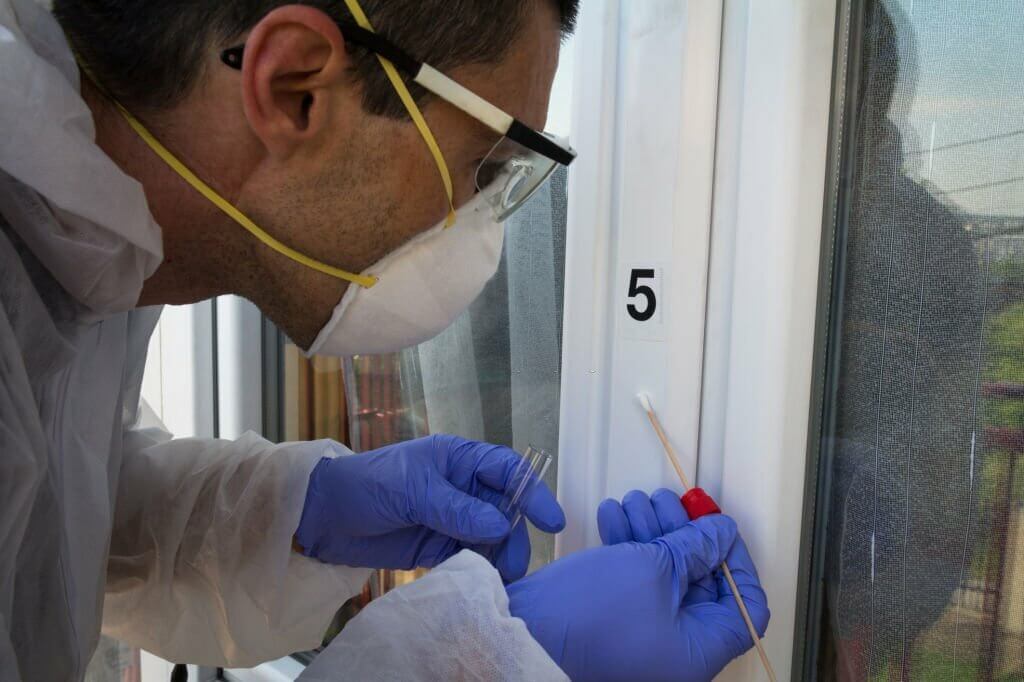News and Blogs
The Forensic Swab: Championing Effective DNA Evidence Collection

Forensic swabs are essential tools for collecting DNA evidence from crime scenes. However, DNA recovery depends on the swab material, the nature of the surface sampled, and the technique used. A study in 2021 investigates how to optimize swabbing for maximum DNA pickup.
How do different swab materials compare for DNA pickup?
Cotton, nylon-flocked, and foam swabs were tested on window glass, ridged plastic and wood surfaces. On smooth, non-absorbent surfaces like glass, all swab types performed equally well. For ridged plastic, large foam swabs recovered more DNA than other types. On absorbent wood, large foam swabs significantly outperformed cotton, nylon-flocked and small foam swabs. The superior performance of large foam swabs on textured and absorbent surfaces may be due to their larger surface area, flexible structure, and fluid retention. However, large foam swabs require extra processing work. Overall, cotton swabs remain a good versatile option.
What swabbing techniques improve DNA recovery?
Experienced practitioners used diverse techniques, yielding varied DNA amounts. Five key technique factors were identified: swab angle, coverage, pressure, rotation and wetting volume.
A 60° swab angle and rotation enhanced pickup on all surfaces. Light pressure was better for glass, while hard pressure and wetting were optimal for ridged plastic and wood. Covering the area twice sufficed for glass, but 4 times was better for plastic and wood. Interactions between factors mattered too. For example, rotating the swab amplified the benefit of hard pressure on ridged plastic.
How much do optimized techniques improve DNA yields?
Protocols incorporating key technique factors were developed for smooth/non-absorbent, ridged/non-absorbent and smooth/absorbent surfaces. On glass, the protocol performed equivalently to experienced individual techniques. For ridged plastic, DNA yields increased around 25% with the protocol. Strikingly, yields rose 2-6 times on wood with protocol sampling. Variation between practitioners also decreased for ridged plastic. Protocols thus substantially improve yields, especially for textured and absorbent surfaces.
What are the takeaways?
Cotton swabs remain a versatile, effective choice for DNA sampling. However, large foam swabs can excel on textured, absorbent surfaces. DNA recovery depends greatly on swabbing technique. Optimal techniques utilize a 60° swab angle and rotation. Protocols tailoring technique factors to surface types significantly enhance DNA pickup and lower variation between practitioners. Developing instructive protocols to standardize and streamline DNA sampling technique is vital for training new forensic practitioners.
In summary, this study generates instructive protocols optimizing swab choice and technique for different surfaces. Implementing such protocols will improve DNA evidence collection from crime scenes, strengthening forensic investigations. Standardized techniques can better equip practitioners to gather the DNA evidence crucial for identification and justice.
Click to View → Mantacc 97000D Forensic Swab
References
Johannes Hedman, Yasmine Akel, Linda Jansson, Ronny Hedell, Nanny Wallmark, Christina Forsberg, Ricky Ansell, Enhanced forensic DNA recovery with appropriate swabs and optimized swabbing technique, Forensic Science International: Genetics, Volume 53, 2021, 102491, ISSN 1872-4973.
UTI Stops DNA Degradation in Frozen Forensic Urine Samples
The Science of Detection in Forensic Drug Testing and Specimen Collection Methods
Related Posts






